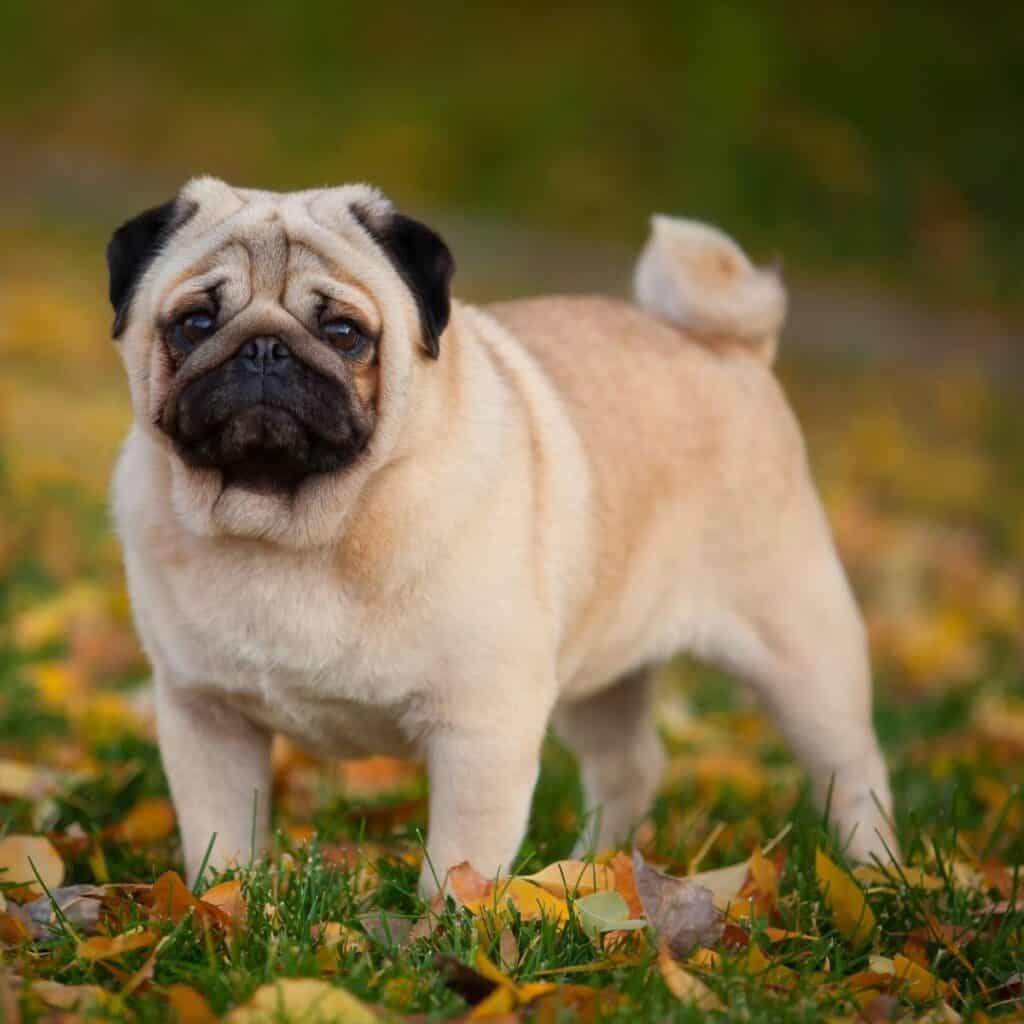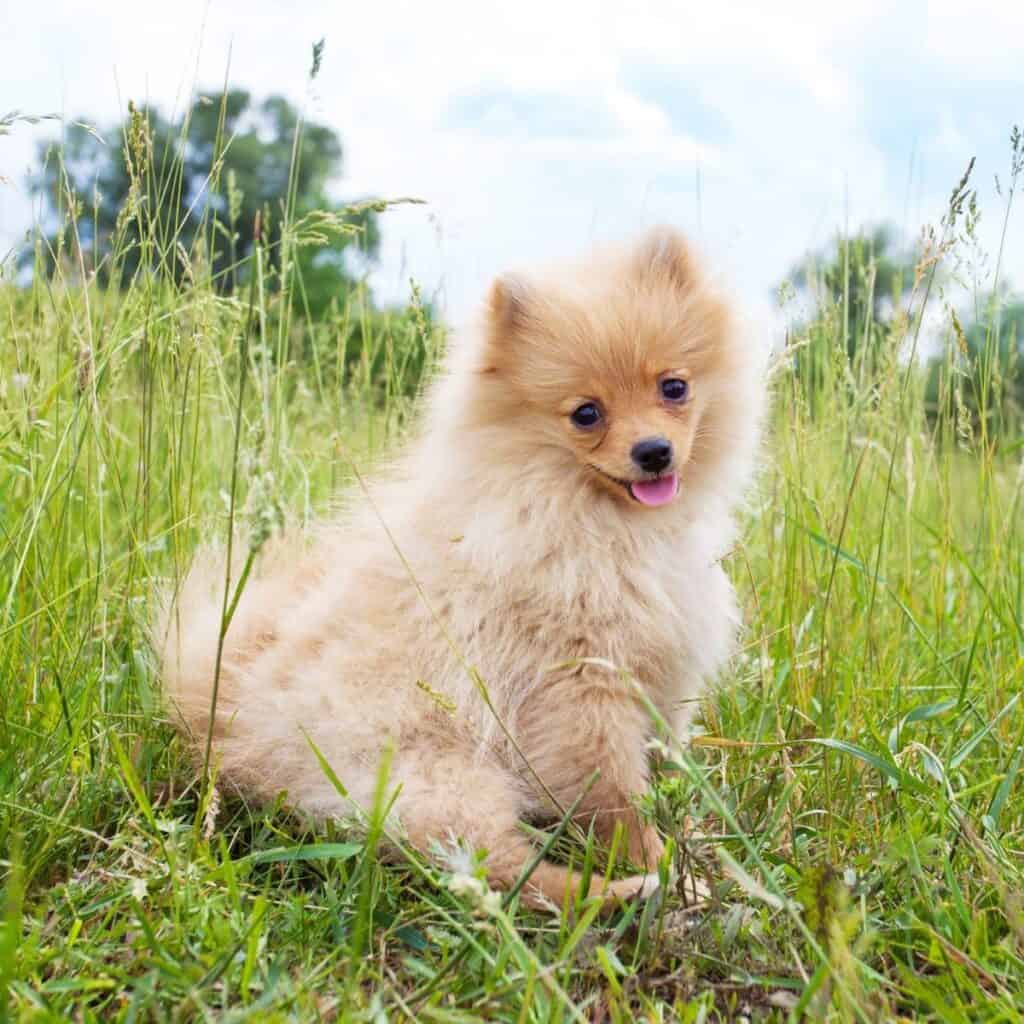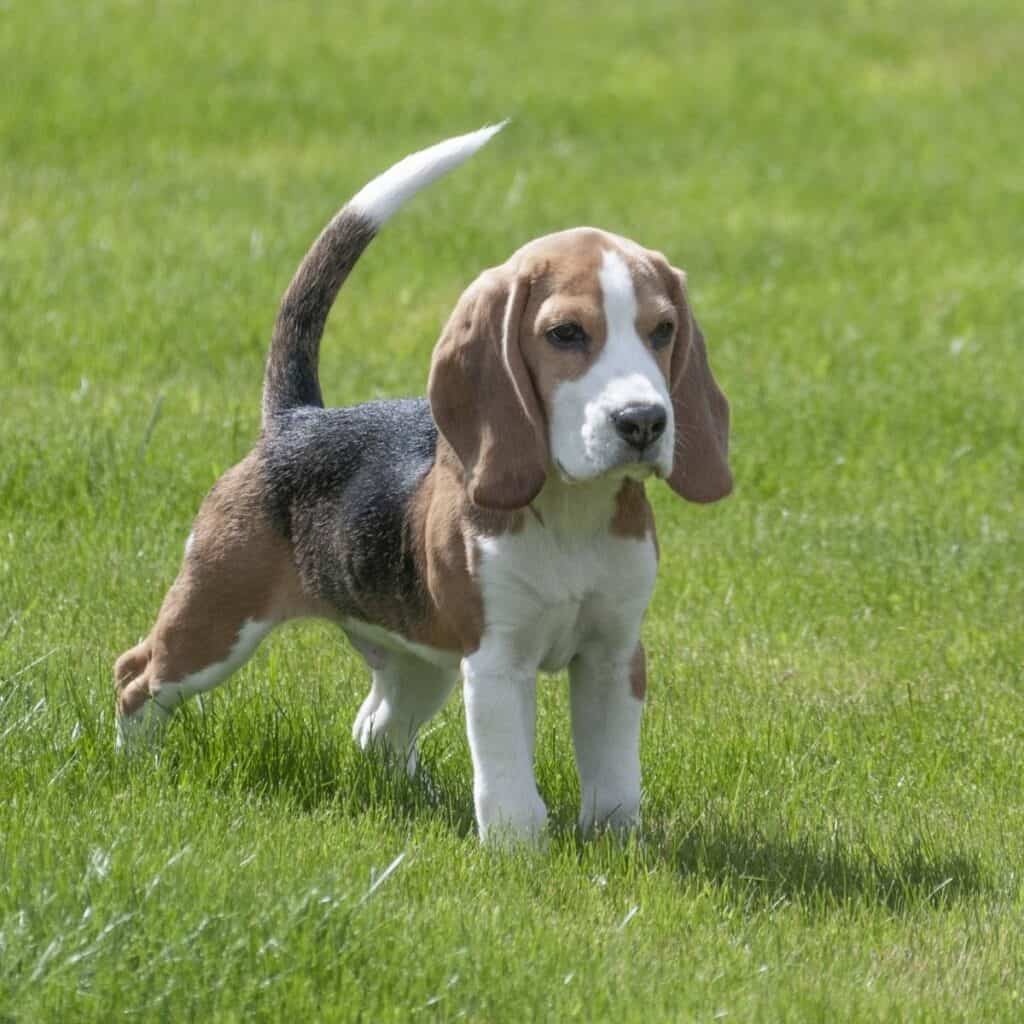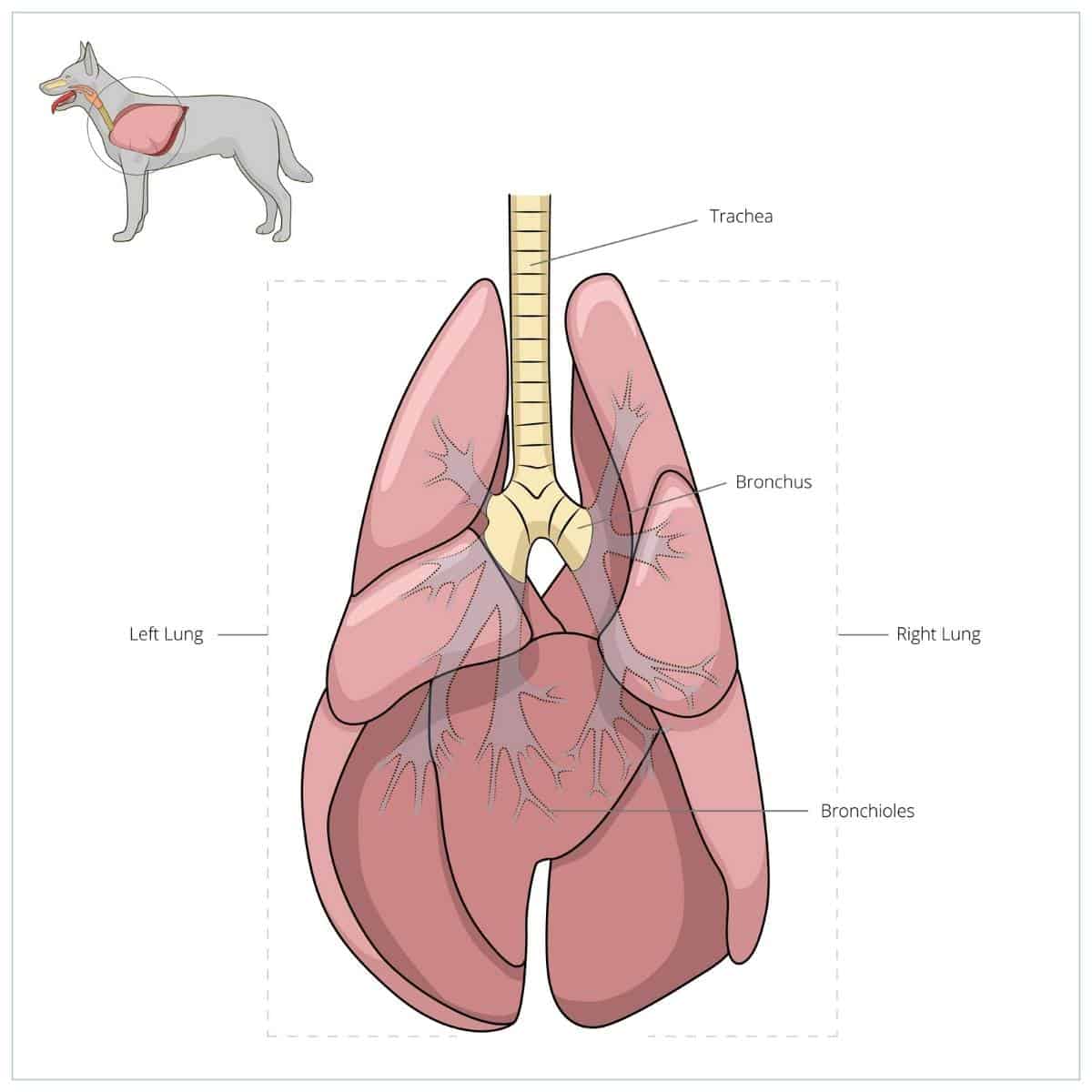Hardest Dogs To Potty Train
As a puppy parent, potty training can be one of the most stressful, and sometimes confusing, parts of the process. To housebreak a dog, you need to create a schedule, follow a consistent routine, and offer plenty of tasty treats as rewards.
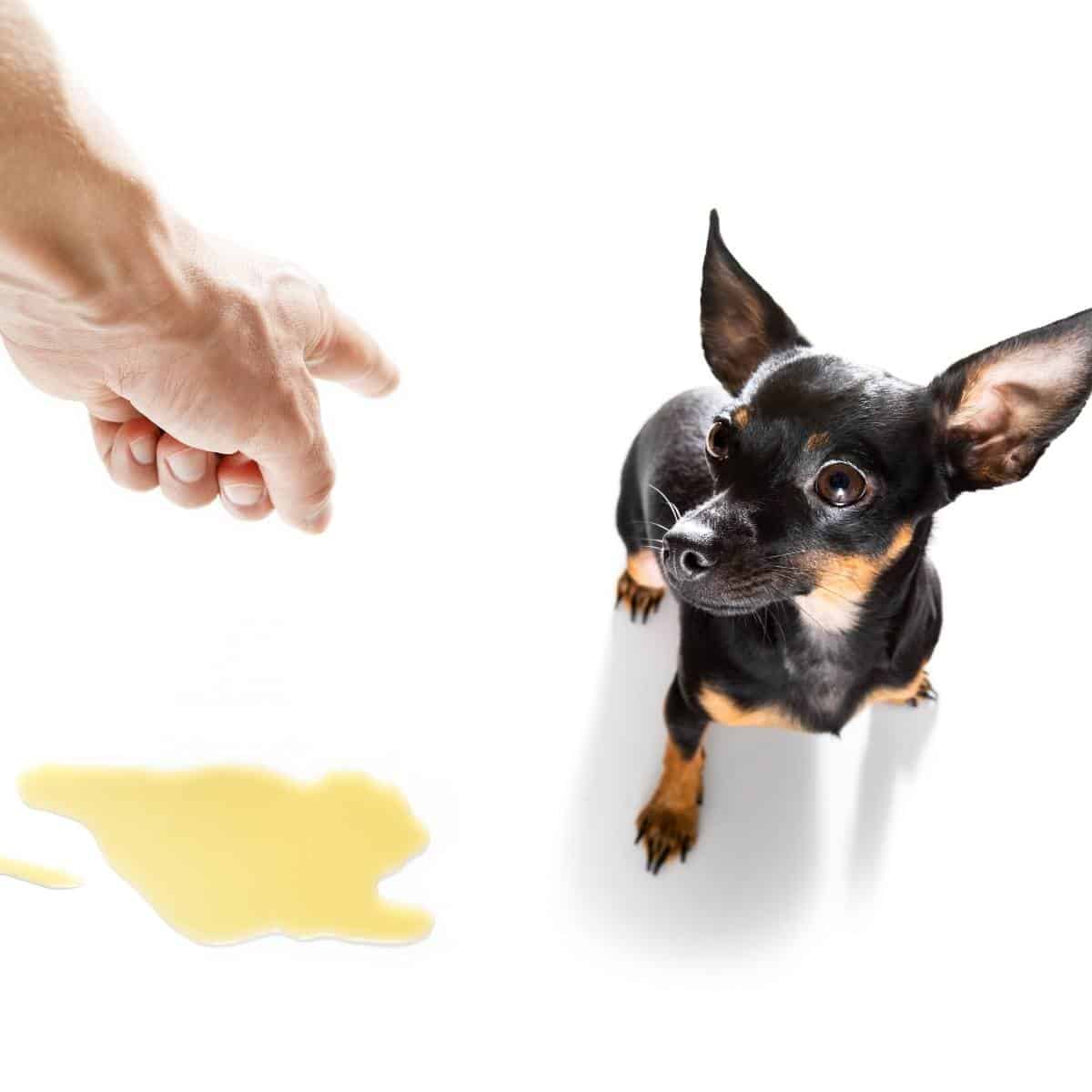
While all dogs can be potty trained with a little patience and structure, some breeds are more difficult than others. If you have a Yorkie pup you are trying to house train, we have a full guide for that!
Read on to learn the hardest dogs to potty train, and a few tips to make the process easier. Take our advice when it comes to potty training stubborn puppies.
Dog Breeds that Are Hard to Potty Train
All dogs can be potty trained, but some breeds make the process a little more difficult. These breeds are a little stubborn when potty training.
Pug
As cute as pugs are, they’re also known for their stubbornness. Because of this, pugs can be resistant to potty training, making the process take a little longer than usual.
Many small dogs, like pugs, are all sensitive to the temperature and elements outside, making them even more hesitant to use the potty in the backyard.
Dachshund
Dachshunds are another stubborn dog breed that makes potty training more challenging. Pair their stubbornness with their smarts, and you’ve got the recipe for a long, slow housebreaking process.
Luckily, dachshunds are very smart dogs who, with enough positive reinforcement and consistency, can be taught just about anything.
Dalmatian
Dalmatians are intelligent, high-energy dogs that can get out of control quickly without proper exercise, training, and boundaries in place.
Because they’re so smart and active, their high energy can be channeled into destructive behavior, and they may have trouble focusing on potty training unless you give them plenty of exercise and activities.
Jack Russell Terrier
Jack Russell Terriers are notoriously difficult to potty train because of their high intelligence, high energy, and stubbornness. That combination means they’re more likely to ignore your desire for them to pee outside, and pee where they’re most comfortable instead.
While they may require a little more persistence and positive reinforcement, they can still be potty trained.
Afghan Hound
Afghan hounds are naturally independent, and as puppies, they can be super playful and high-energy. They live for attention from their people, and this can lead to some naughty behaviors—like using the potty inside.
The good news is that that attention-seeking personality trait means they’re willing to learn and love to be trained, as long as you keep it interesting and offer plenty of high-value treats as rewards.
Pomeranian
Pomeranians are fast learners and great with training, but they’re also a high-energy, stubborn breed that needs a strict schedule and reward system to potty train.
They’re also small dogs with equally small bladders, meaning they will need to be taken outside more often than larger dogs, which makes potty training more difficult.
Beagle
Beagles are hounds, and they were bred to have a one-track mind. Once they pick up a scent, they can be difficult to re-engage in the training process, and this can make them easily distracted and a little harder to train than other breeds.
Bichon Frise
Bichon Frises are known for their independence, and they prefer to stay inside on inclement weather days. Because of this, they can be difficult to potty train. You may also recognize them by their teddy bear hair cut.
They have a fierce loyalty to their family, however, and respond well to positive reinforcement, according to the AKC.
Pekingese
Bichon Frises are known for their independence, and they Pekingese pups have a high prey drive that can make them easily distracted when they’re outside, making it difficult for them to focus on training of any kind.
They’re also small dogs, and they need to be taken out more frequently than larger dogs.
Basenji
Basenjis are known for their stubbornness. Despite their intelligence, they can be difficult to keep on task and motivate enough to train. Because of this, potty training a basenji requires more patience and consistency than other breeds.
How to Make Housebreaking Dogs Easier
Housebreaking your puppy is all about being consistent with all of your training efforts. Potty training can be tedious, and it can take some puppies up to a year before they’re fully potty trained.
Create a consistent schedule, and stick to it. Take your puppy out every two hours (more often if they’re a small breed), and take them out after they wake up from a nap, after eating, and after any rigorous playtime.
In addition to a consistent potty schedule, try to stick to the same eating and sleeping schedule every day to make their routine even easier.
Once you’ve got the routine down, the next key piece of the puzzle is positive reinforcement. Reward your puppy with treats or toys when they go potty where you want them to, and this will help them build a connection between their behavior and the designated spot.
Common FAQs About Potty Training Dogs
It’s a common misconception that girl dogs are easier to potty train. While it can be easier for you to tell when a girl dog is squatting, there is virtually no difference between potty training a girl dog and potty training a boy dog.
What can affect how easy it is to potty train your pup is their breed and personality, as well as your consistency and commitment to training.
The key to housebreaking your puppy is consistency. Take your puppy outside on a regular schedule, especially after meals, after they drink a lot of water, after playtime, and when they wake up.
If possible, you should also take your puppy outside at least every 2 hours so they can start to associate outside with potty time. You should also limit your puppy’s access to the house until they’ve progressed in their potty training.
Puppy pads have their pros and cons, and your potty training method will ultimately depend on your schedule and what fits into your lifestyle better.
Puppy pads can be a convenient potty training option, especially for those in apartments or those that can’t reliably take their puppy outside every two hours because of work or family obligations.
They can, however, make it difficult to transition to outside potty time. You also run the risk of your dog associating inside with where they should go to the bathroom.
If you do use a puppy pad, make sure you’re consistent with their usage and don’t mix in outside potty breaks until you’re ready to fully transition.
Is Your Dog Difficult to Potty Train?
While some breeds can be more difficult to potty train, like Jack Russell Terriers, Beagles, and Bichon Frises, potty training is still possible with consistency and patience. Stick to a schedule with all of your puppy’s daily activities, including meals, sleeping, and potty time, and reward them for a job well done.
Potty training can seem difficult and never-ending, but if you stick to you’re consistent with your schedule and your rewards, your puppy can be potty trained in no time, no matter what breed they are.
